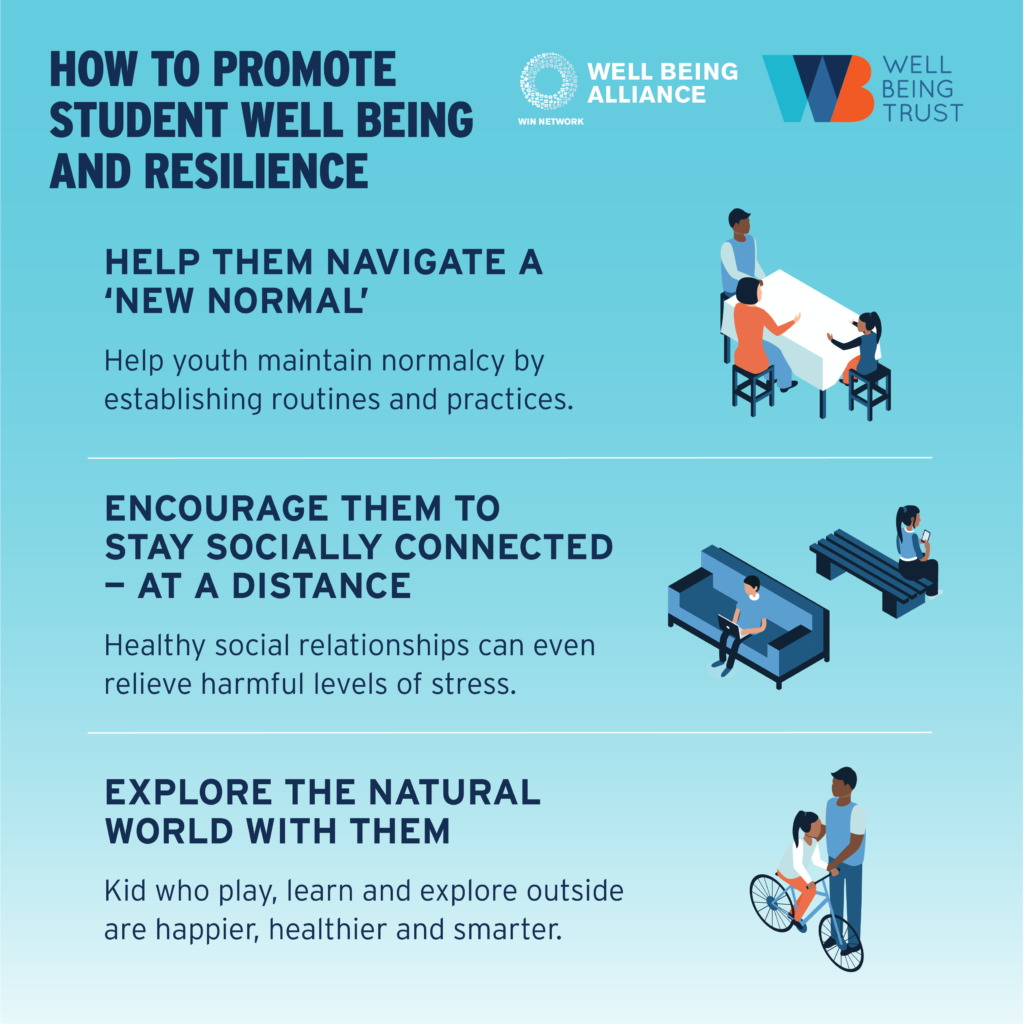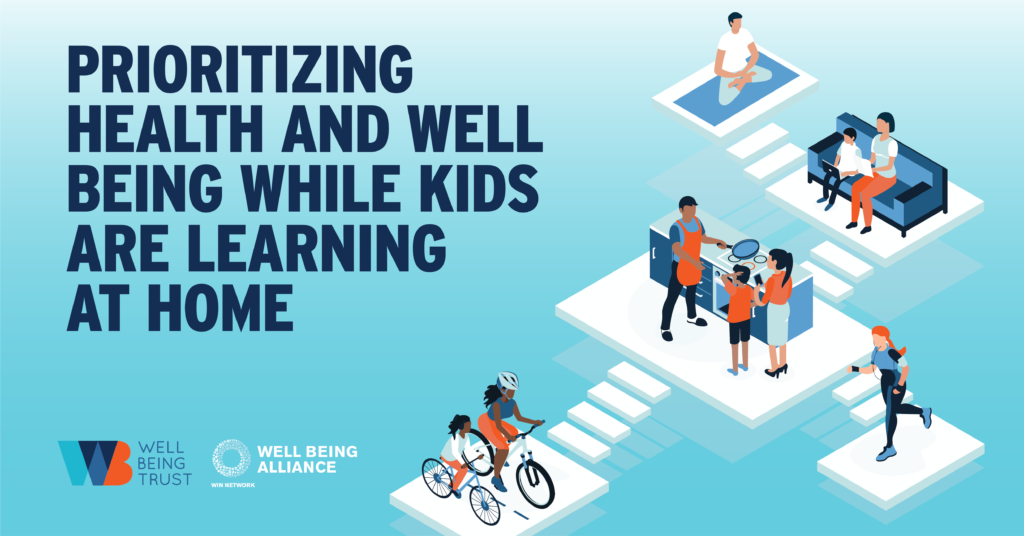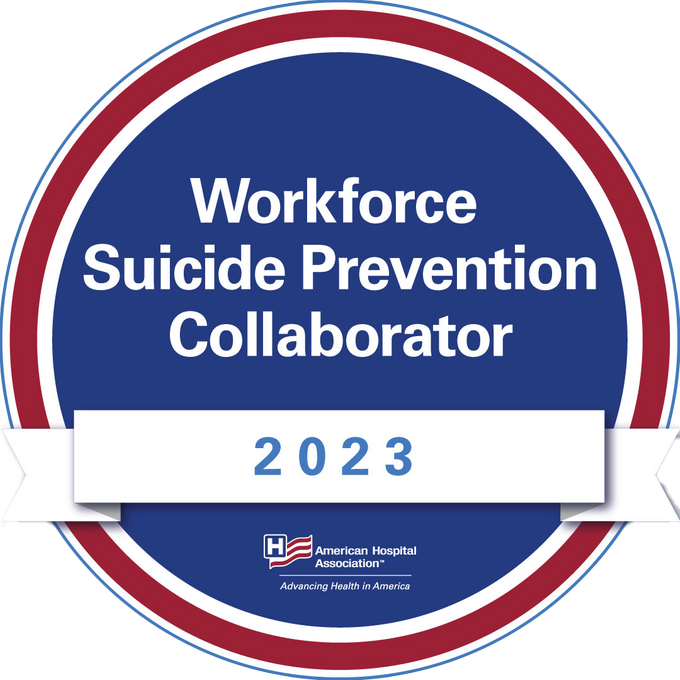Prioritizing Health and Well Being While Kids Are Learning at Home
Navigating a “new normal” for children, caregivers and teachers alike
Blog by Lisa Herron, Executive Fellow, Well Being Trust
Eating healthy, staying physically active, and social connections are essential to our daily lives— perhaps more important for kids. But, with school closures and physical distancing guidelines, new challenges have arisen in ensuring a healthy learning environment for every student in America.
COVID-19 is a spotlight on the inequitable access that families in the US have to basic necessities from broadband internet, reliable and 
Lacking access to even one “basic need” can spur a long and entrenched cycle of vulnerability and instability for families and children, with direct impacts on health and well-being. It is beyond time to ensure people are able to meet their needs. For families and children, that means providing equitable access to educational environments—inside and outside the classroom—and building in opportunities for resilience in the long-term.
To bridge some of these new obstacles, members of the Well Being Alliance, like the Alliance for a Healthier Generation and Children & Nature Network, are sharing resources for teachers and caregivers on ways to promote student well-being and resilience— and their own.
Navigating a ‘new normal’
Today’s crisis is increasing stress and anxiety for people everywhere, who are struggling to manage their relationships, family life, finances, and work responsibilities. Maintaining a stable relationship with an adult is one of the most critical protective factors children can have against stress. As such, caregivers and teachers should be assured that their loving support for kids makes a difference. In turn, it is incumbent to support caregivers and teachers in coping and finding opportunities for self-care now and when students return to school.
Caregivers and teachers can also help youth maintain normalcy by establishing routines and practices that promote healthy habits at home. In the same way that schools work to create safe, healthy, resilient school environments, parents and caregivers can do the same in their home learning efforts. Stopping for activity breaks — having students get up and dance or move around, for example — during online lessons, helping kids moderate screen time, and encouraging students to engage with one another more are some ways this can be done, according to the Alliance for a Healthier Generation. Helping parents and caregivers stay resilient and manage their own stress is critical to the wellbeing of our children.
Staying socially connected — at a distance
People across the nation are doing their best to follow their local guidelines around physical distancing – while also combating feelings of social isolation. We are social creatures by nature and by design. Studies show people who feel supported by friends, family and neighbors live happier, healthier lives than those who don’t. Healthy social relationships can even relieve harmful levels of stress. They are just as integral to our well-being as sleeping well and eating nutritious foods.
For children, staying socially connected could mean having virtual play dates, writing letters — or emails — to friends, or spending quality time with family, like playing games or doing puzzles or crafts. A walk or a bike ride outside with family members or other people they love gives children a chance to bond with loved ones.
Exploring the natural world
Experiencing nature can improve at-home learning and provide a much needed respite during quarantine, even from a balcony, window, yard or neighborhood green space.
The benefits of being outside are proven. Children who play, learn and explore outside are happier, healthier and smarter. Some of the benefits include increased attention spans and test scores, better physical and mental health, stronger immune systems, and improved problem solving, creative thinking and social skills. With that in mind, the Children & Nature Network is compiling tips and tools in FindingNature.org, a resource hub for the brightest ideas from trusted sources such as National Geographic, Latino Outdoors, Captain Planet, and many other online sources that can help to get kids outside in a way that’s safe and productive—even from indoors for families who don’t have access to safe nearby nature.
Spring is a wonderful time to explore nature. Birds are singing and nesting. Flowers are blooming – even in the cracks in the sidewalk. Spending time noticing what’s right out your window or backdoor can open up a world of curiosity and awe for children (and their adults, too!).
The effects of this pandemic on health and well-being will last long after the virus is contained. Prioritizing health and well-being today, especially among youth, is the best way for our nation to establish new legacies of better health for generations to come.







